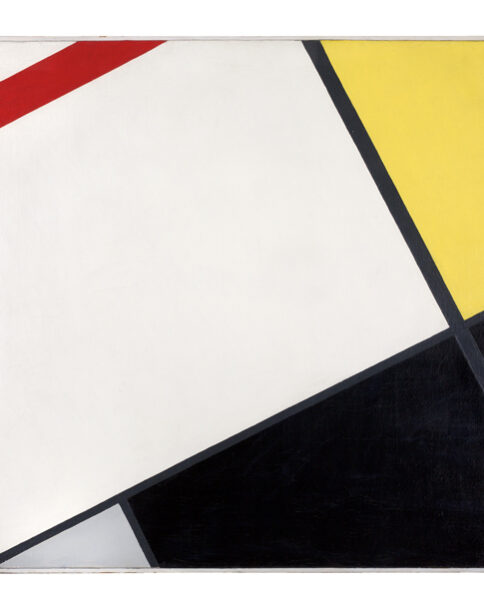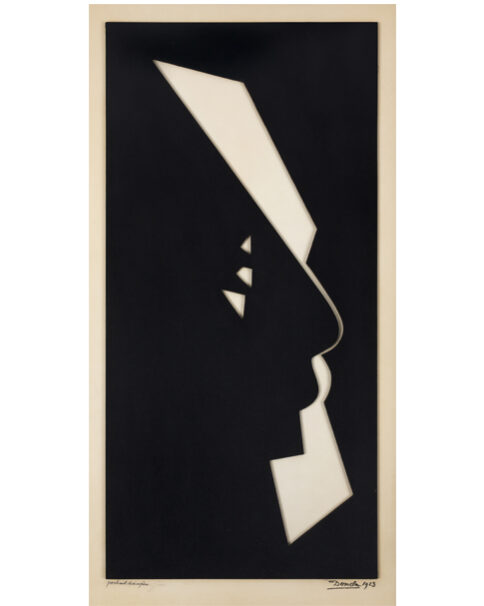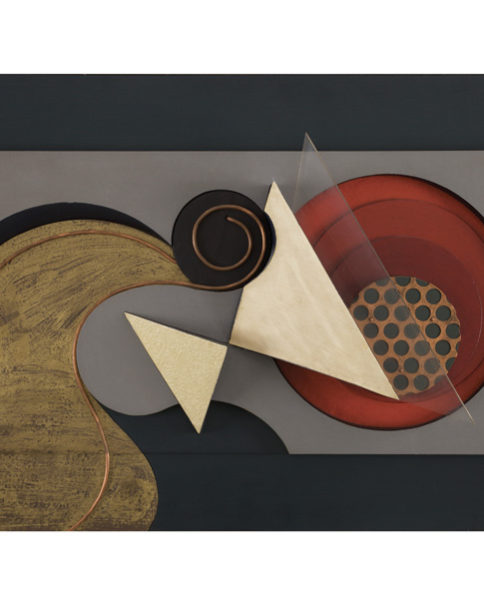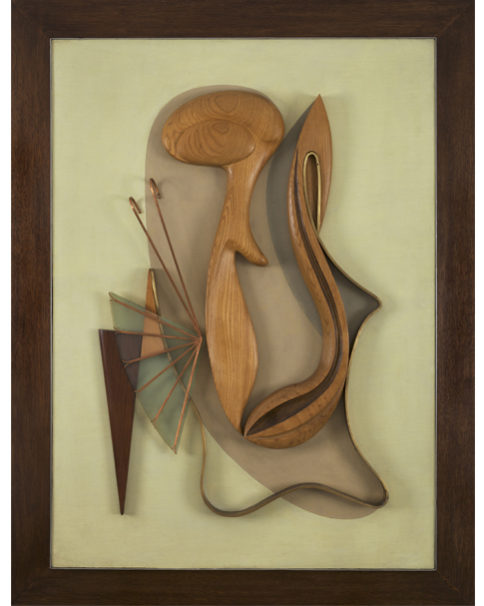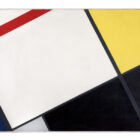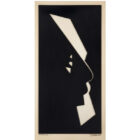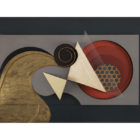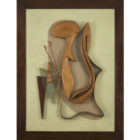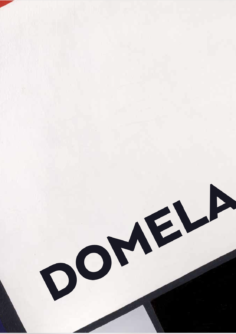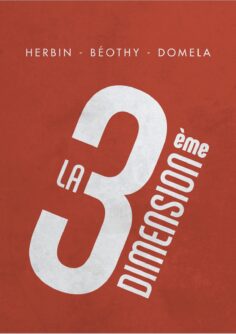Born in Amsterdam in 1900, César Domela gave up a career as an ethnologist to devote himself to painting from 1918. In 1923, he went to exhibit his first non-figurative works in Berlin with the November group. He stayed in this city from 1927 to 1933, which gave him the opportunity to meet more extensively many influential artists – Laszlo Moholy-Nagy, Alexander Rodtchenko, Raoul Hausmann, Naum Gabo, Kurt Schwitters, Carl Buchheister… – and to try his hand at several practices such as graphic design, photomontage, typography and interior design. In 1933, he settled permanently in Paris, a city he had already visited in 1924 and where, through contact with Mondrian and Theo van Doesburg, he had developed a very strong interest in neoplasticism and constructivism.
The 1930s were years rich in encounters, exhibitions, contributions and participation in artists’ collectives dedicated to the promotion of abstraction for Domela. In addition to his personal exhibitions initially held at the Galerie Pierre (1934, 1939), he was invited to participate in events such as L’Internationale constructiviste – alongside major figures of abstraction such as Mondrian, Gabo and Pevsner – and exhibited in 1936 in New York at the Museum of Living Art. He was also a member of Cercle et Carré, then of Abstraction Création, groups for which he actively contributed to the journals. In 1937, he founded the multilingual journal Plastique with Sophie Tauber and Hans Arp.
These years of intense activity within avant-garde circles were concomitant for Domela with a gaining of autonomy from his primary influences, with the development of a singular approach to geometric abstraction. Already since the end of the 1920s, and even more radically after his stay in Berlin, Domela moved away from the overly rigorous principles of De Stijl. In his compositions, he favoured sinuous curves, ellipses, circles, arabesques, all shapes and motifs drawn from his knowledge and passion for oriental thought and aesthetics. In the 1930s, he abandoned oil painting to create reliefs that combined geometry and organicism, using materials as diverse as they were unusual (wood, shark skin, tortoiseshell, suede, copper, brass, plexiglass, etc.). Domela also broke with neoplasticism by ceasing to limit himself to primary colours and choosing chromatic diversity.
The richness and originality of this work will continue to be praised, both in France, where he lived until his death in 1992, and abroad. After the war, he participated in the founding of the Salon des Réalités Nouvelles and held exhibitions in Paris, Berlin and even Calcutta.
